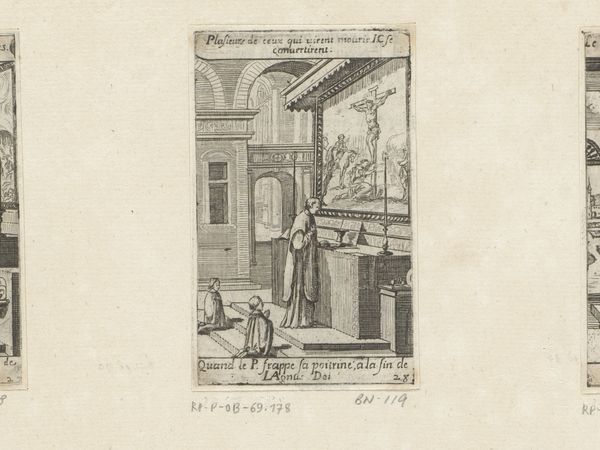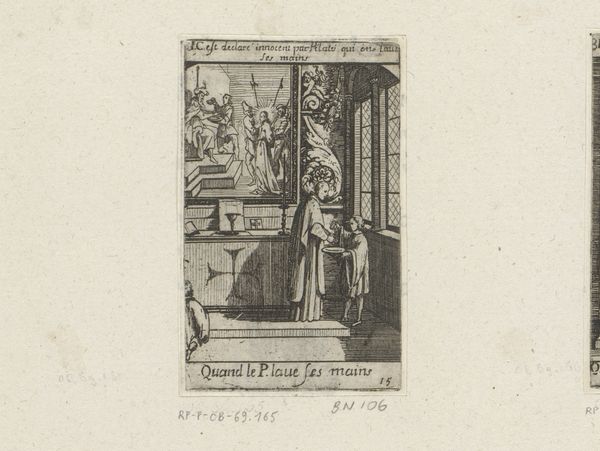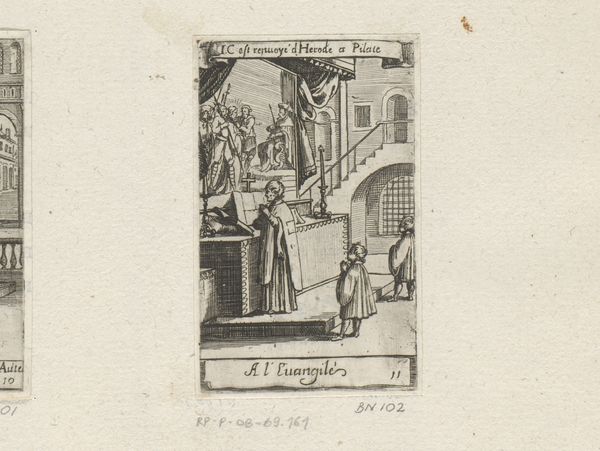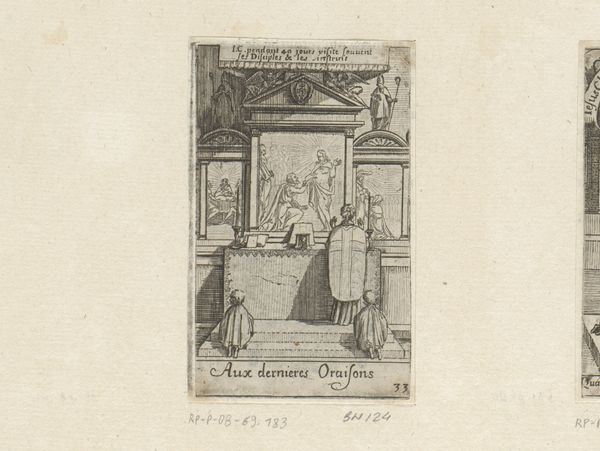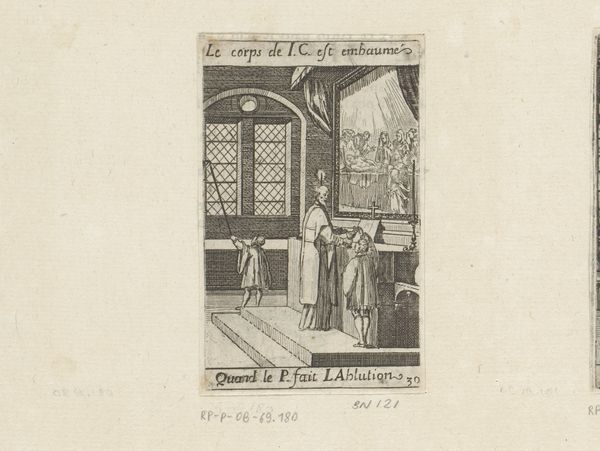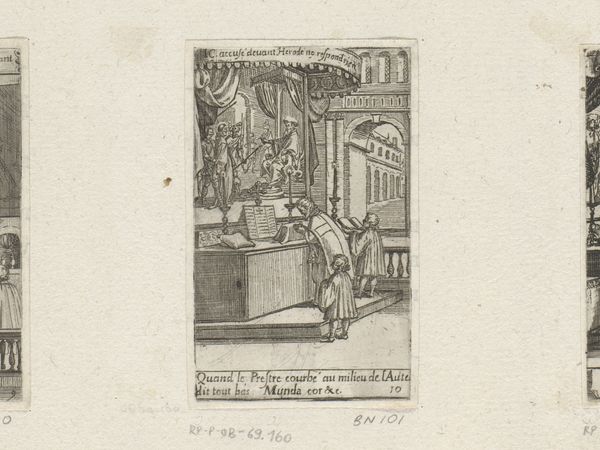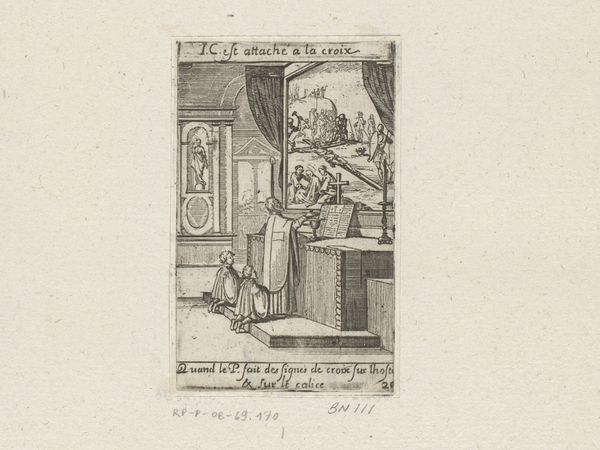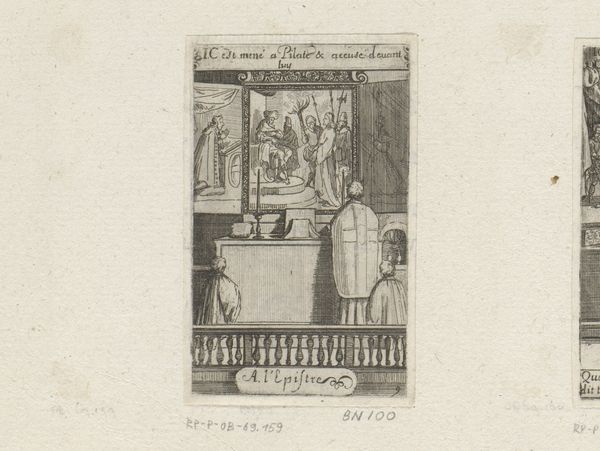
print, etching, engraving
#
baroque
# print
#
etching
#
old engraving style
#
engraving
Dimensions: height 84 mm, width 52 mm
Copyright: Rijks Museum: Open Domain
Editor: This etching, "Priest with two altar boys before an altar" by Sébastien Leclerc I, dated 1661, uses really fine lines, almost like looking at fabric under a microscope. The detail in rendering the altar is quite striking! What do you notice about the way this piece was made? Curator: Considering the materiality of printmaking, we should consider the labour involved in producing such intricate lines using etching. The acid biting into the metal, controlled by the artist, represents a deliberate transformation of material through process. Note how the print would have allowed for relatively mass reproduction, bringing religious imagery and possibly baroque aesthetic into more homes, a shift in consumption of images tied to changes in devotional practices. Editor: So, the means of production actually influenced the dissemination of religious ideas at that time? Curator: Precisely. Etching, as a process, democratizes image ownership. Think about the economic impact – workshops employing etchers, the trade of prints, and the access regular people had to it. Consider, too, the paper itself; it becomes the support to something more profound, while being something very basic. What boundaries between labor and aesthetics did the use of such material pose at that time? Editor: It’s amazing to think about how the materials and the process of creation so directly impacted who had access to art and ideas. I never thought about prints in that light. Curator: Indeed, viewing it as purely art might miss a discussion of how it served society beyond the art world. It certainly offers a fascinating entry point to analyze artistic, social and economical considerations tied to art.
Comments
No comments
Be the first to comment and join the conversation on the ultimate creative platform.

